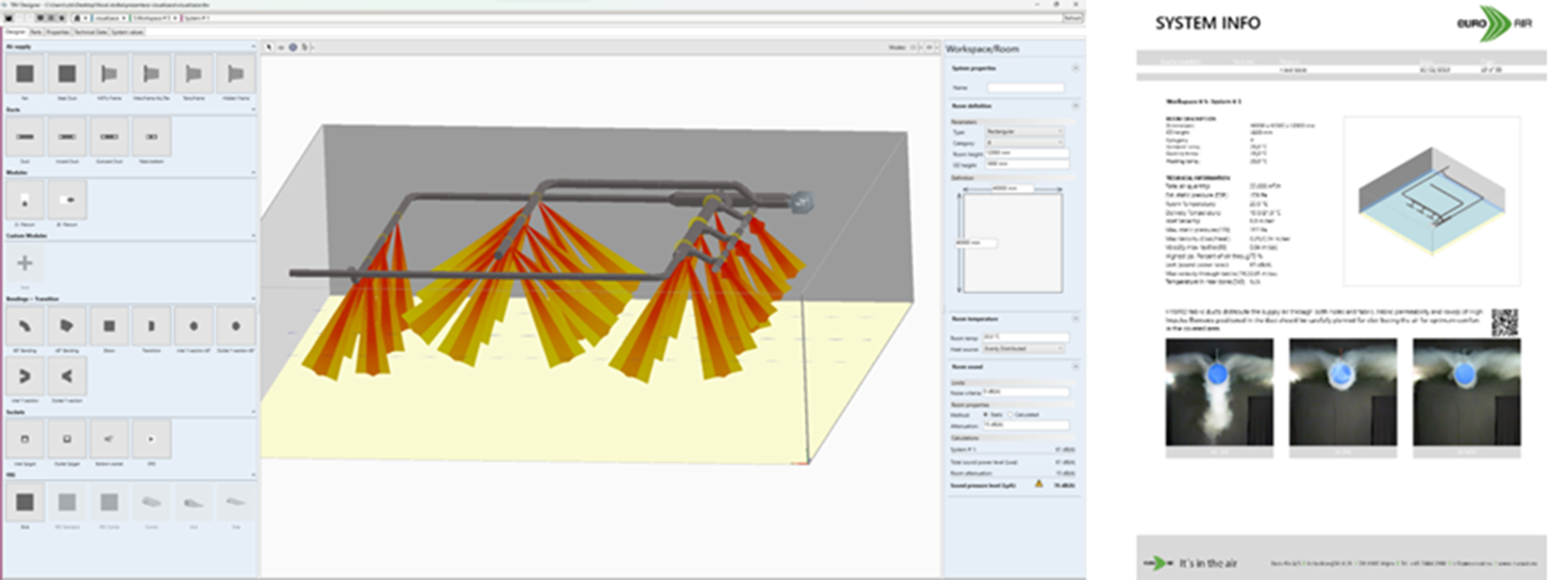
PRODUCTS & DESIGN

TBV DESIGNER
Special Software for designing fabric ducting systems

Klima engineers are designing fabric air ducting systems with special software, called TBV Designer, developed especially for Euro Air products
To create the textile air distribution systems, we need to know the incoming airflow, the dimensions of the fabric ducts, and the specific requirements of the area

Design of Warehouses
Design of Auditoriums
Design of Cooling rooms
Design of Cafeterias
Design of Swimming pools
Design of Swimming pools
TYPES OF SYSTEMS
Our fabric duct systems can be classified into 3 main categories
The fabric ducts can be grouped on the base, whether it is an active, passive air distribution system or a combination of both
PERFORATION
Patented types of perforation for efficient air distribution
Euro Air patents the two most standard types of perforation of fabric ducts, patented DFC perforation and nozzle perforation

MOUNTING
We have three types of standard suspension for fabric ducting installation in all areas. Components of aluminum models can also be powder-coated in RAL colors

Hanging by cable
The most common way to install fabric ducts is to use cables. This suspension is very lightweight, which is very beneficial in reducing ceiling stress or saving project transportation costs to customers. The wire is necessary to fix the cable horizontally and fix it to the ceiling with special hangers (strap-up)
Hanging with aluminum wingrail rails
Wingrail aluminum profiles are used to fix directly to ceilings or walls. It is a typical installation for half-round and quarter-round fabric ducts. It is suitable for applications with low ceilings where there is insufficient space such as restaurants, offices or schools


Hanging with aluminum Flexrail rails
Suspensions are made of aluminum profiles fixed to the ceiling with threaded beams or wire hangers (strap-up). Typical use is for places where fabric ducts need to be placed below the ceiling, which can be found in areas with high ceilings, such as production halls, warehouses, hypermarkets or sport arena

KLIMA is committed to providing high quality, durable, and long-lasting fabric air ducts
and easy installation by a team of expert engineers We are ready to give advice and design. The right fabric duct system to suit your needs
- HOME HOME
- ABOUT US ABOUT US
- WHY FABRIC DUCTS WHY FABRIC DUCTS
- PRODUCTS & DESIGN PRODUCTS & DESIGN
- APPLICATIONS APPLICATIONS
- DOWNLAOD DOWNLAOD
- CONTACT US CONTACT US




